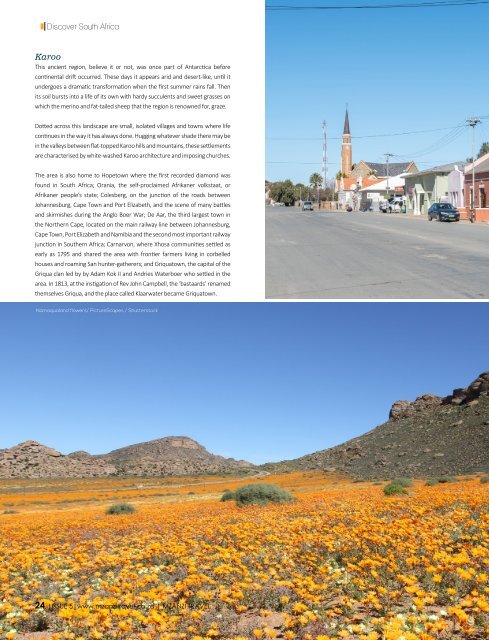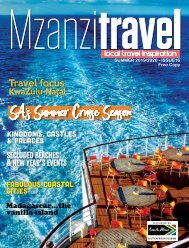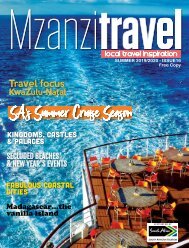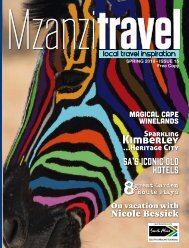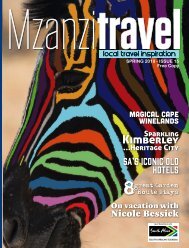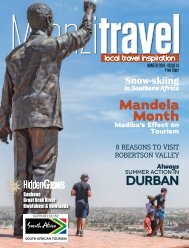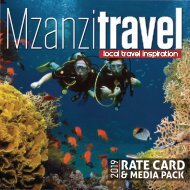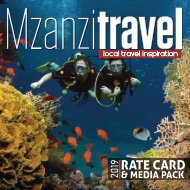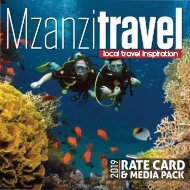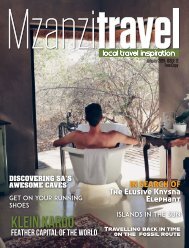Mzanzi Travel - Local Travel Inspiration (Issue 5)
MZANZI TRAVEL is a full-colour quarterly, A4 publication that sets out to showcase, foster and promote whatever South Africa has to offer to both local and international tourists.
MZANZI TRAVEL is a full-colour quarterly, A4 publication that sets out to showcase, foster and promote whatever South Africa has to offer to both local and international tourists.
Create successful ePaper yourself
Turn your PDF publications into a flip-book with our unique Google optimized e-Paper software.
Discover South Africa<br />
Karoo<br />
This ancient region, believe it or not, was once part of Antarctica before<br />
continental drift occurred. These days it appears arid and desert-like, until it<br />
undergoes a dramatic transformation when the first summer rains fall. Then<br />
its soil bursts into a life of its own with hardy succulents and sweet grasses on<br />
which the merino and fat-tailed sheep that the region is renowned for, graze.<br />
Dotted across this landscape are small, isolated villages and towns where life<br />
continues in the way it has always done. Hugging whatever shade there may be<br />
in the valleys between flat-topped Karoo hills and mountains, these settlements<br />
are characterised by white-washed Karoo architecture and imposing churches.<br />
The area is also home to Hopetown where the first recorded diamond was<br />
found in South Africa; Orania, the self-proclaimed Afrikaner volkstaat, or<br />
Afrikaner people’s state; Colesberg, on the junction of the roads between<br />
Johannesburg, Cape Town and Port Elizabeth, and the scene of many battles<br />
and skirmishes during the Anglo Boer War; De Aar, the third largest town in<br />
the Northern Cape, located on the main railway line between Johannesburg,<br />
Cape Town, Port Elizabeth and Namibia and the second most important railway<br />
junction in Southern Africa; Carnarvon, where Xhosa communities settled as<br />
early as 1795 and shared the area with frontier farmers living in corbelled<br />
houses and roaming San hunter-gatherers; and Griquatown, the capital of the<br />
Griqua clan led by by Adam Kok II and Andries Waterboer who settled in the<br />
area. In 1813, at the instigation of Rev John Campbell, the ‘bastaards’ renamed<br />
themselves Griqua, and the place called Klaarwater became Griquatown.<br />
Typical street scene, Canavon, Northern Cape Karoo /<br />
Grobler du Preez / Shutterstock<br />
Namaqualand flowers/ PictureScapes / Shutterstock<br />
24 |ISSUE 5|www.mzanzitravel.co.za | MZANZI TRAVEL


